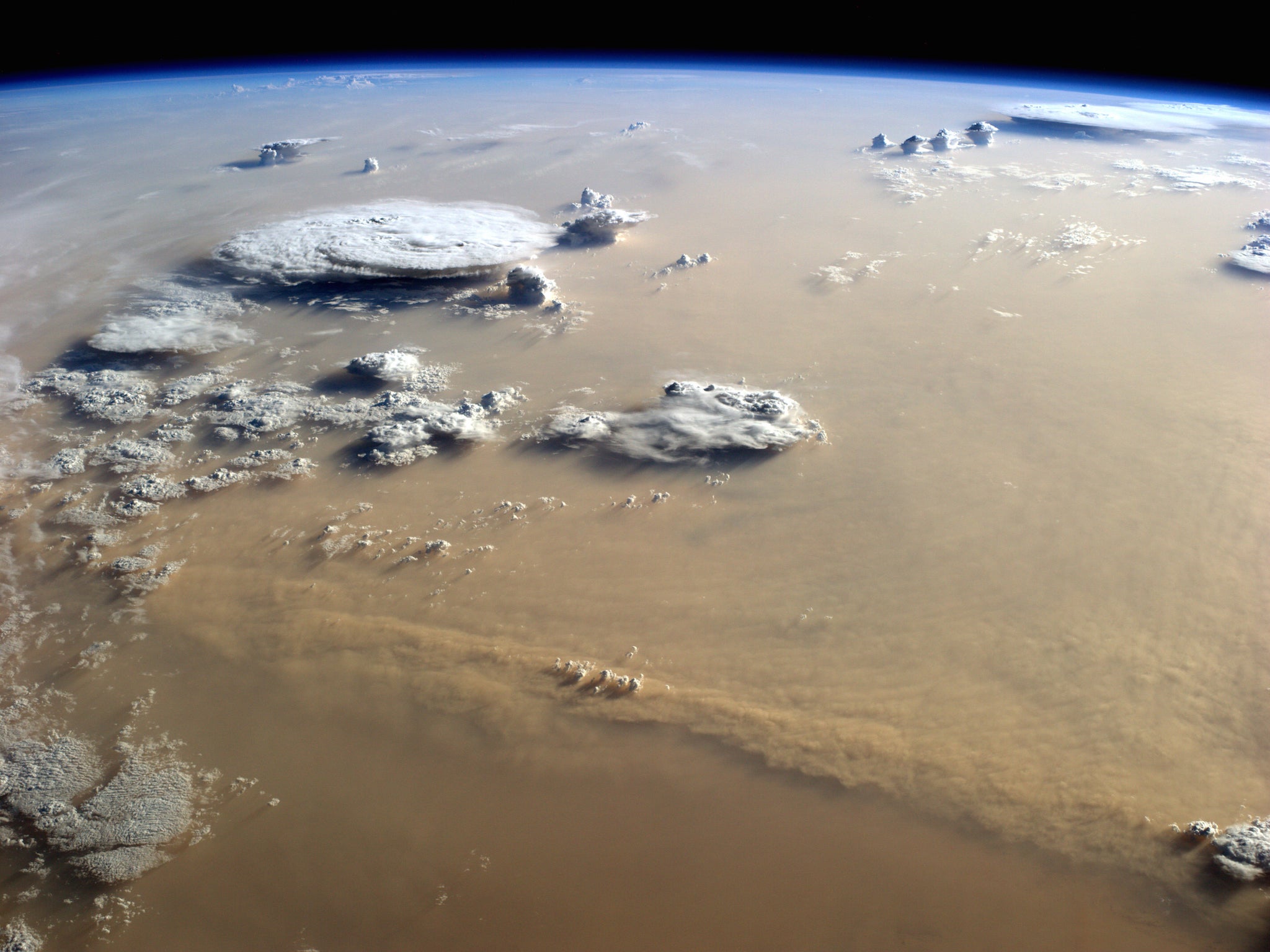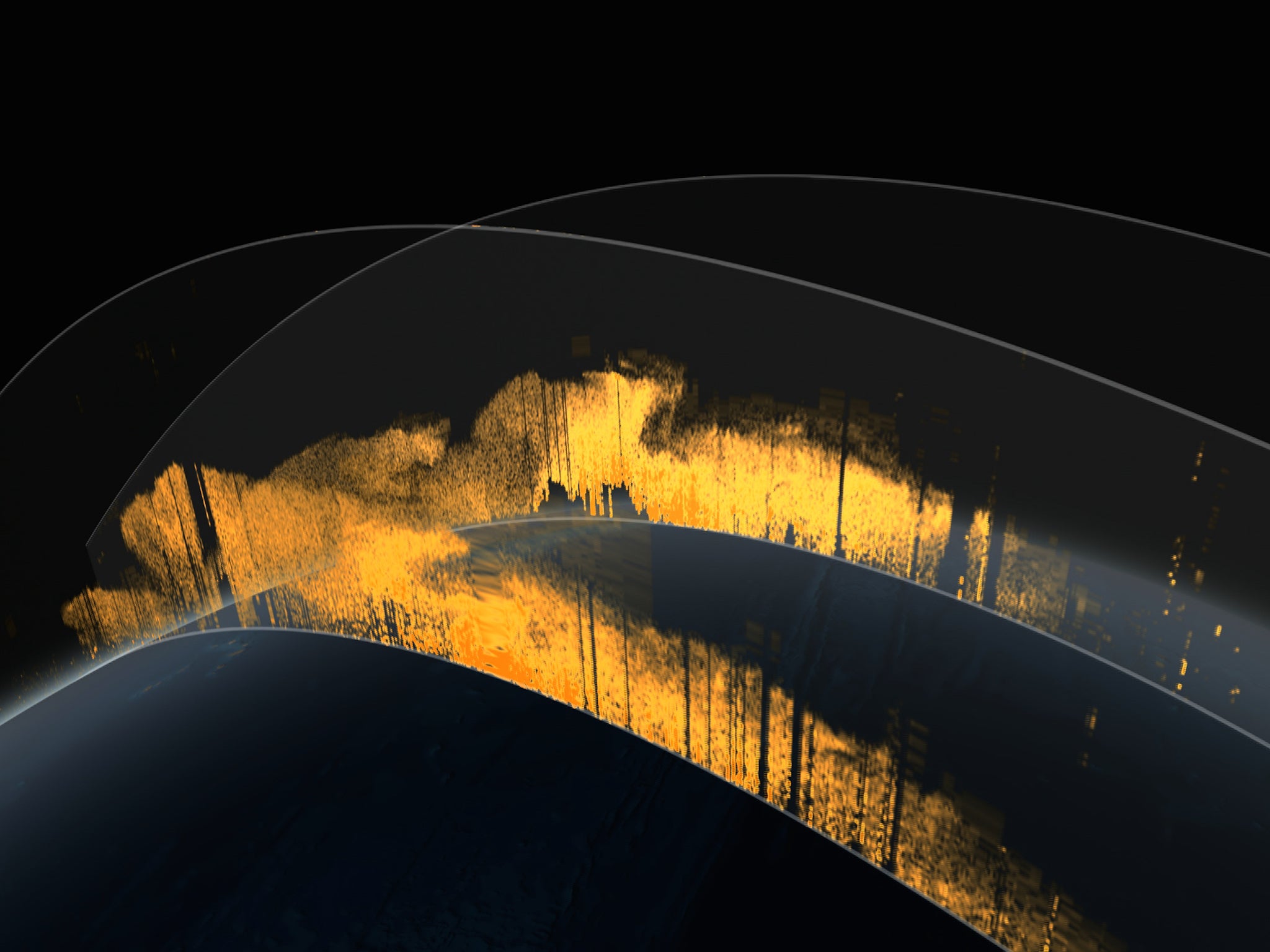Amazon Rainforest: Nasa satellite measures remarkable 1,600 mile journey of dust from Sahara desert to jungle basin
Dust from North Africa provides crucial nutrients for rainforest's plants and trees

Your support helps us to tell the story
From reproductive rights to climate change to Big Tech, The Independent is on the ground when the story is developing. Whether it's investigating the financials of Elon Musk's pro-Trump PAC or producing our latest documentary, 'The A Word', which shines a light on the American women fighting for reproductive rights, we know how important it is to parse out the facts from the messaging.
At such a critical moment in US history, we need reporters on the ground. Your donation allows us to keep sending journalists to speak to both sides of the story.
The Independent is trusted by Americans across the entire political spectrum. And unlike many other quality news outlets, we choose not to lock Americans out of our reporting and analysis with paywalls. We believe quality journalism should be available to everyone, paid for by those who can afford it.
Your support makes all the difference.It is nothing short of extraordinary.
Every year, winds and weather formation pick up millions of tonnes of nutrient-rich dust from the Sahara desert, carries it 1,600 miles westwards and then dumps it over the Amazon rainforest. The dust, containing large amounts of phosphorous, is recycled by the jungle’s rich and abundant fauna.
Scientists have known about this transfer of dust for a number of years. But, now, for the first time, experts at Nasa have calculated the precise amount using three-dimensional modelling based on satellite data.
“We know that dust is very important in many ways,” said Hongbin Yu, an atmospheric scientist at the University of Maryland who works at NASA’s Goddard Space Flight Centre. “It is an essential component of the Earth system. Dust will affect climate and, at the same time, climate change will affect dust.”
Mr Yu added: “[To understand those effects] first we have to try to answer two basic questions. How much dust is transported? And what is the relationship between the amount of dust transport and climate indicators?”
Mr Yu and colleagues based their calculation on data collected by NASA’s Cloud-Aerosol Lidar and Infrared Pathfinder Satellite Observation, or CALIPSO, satellite from 2007 to 2013. The results were published in Geophysical Research Letters, a journal of the American Geophysical Union.

The scientists worked out that every year strong winds pick up an average of 182m tonnes of dust and carry it past the western edge of the Sahara. This amount is equivalent to the contents of 689,290 large trucks, Nasa said.
The dust then travels west across the Atlantic ocean. Close to the coast of South America, 132m tonnes remain in the air and around 28m tonnes falls over the Amazon basin. The remainder continues to be transported westwards.
Mr Yu said the most valuable dust is that picked up from the Bodélé Depression in Chad, an ancient lake bed where rock minerals composed of dead microorganisms are loaded with phosphorus. Phosphorus is an essential nutrient for plant proteins and growth, which the Amazon rain forest depends on this.
Nutrients – the same ones found in commercial fertilisers – are in short supply in Amazonian soils, Nasa said. Instead they are locked up in the plants themselves. Some nutrients, including phosphorus, are washed away by rainfall into streams and rivers that drain from the Amazon basin.
The project looked at seven year’s worth of data. Experts said it was insufficient to look for long-term trends but crucial for understanding how dusts move across the ocean.
Chip Trepte, project scientist for CALIPSO, said: “We need a record of measurements to understand whether or not there is a fairly robust, fairly consistent pattern to this aerosol transport.”
Mr Yu added: “This is a small world and we're all connected together.”
Join our commenting forum
Join thought-provoking conversations, follow other Independent readers and see their replies
Comments